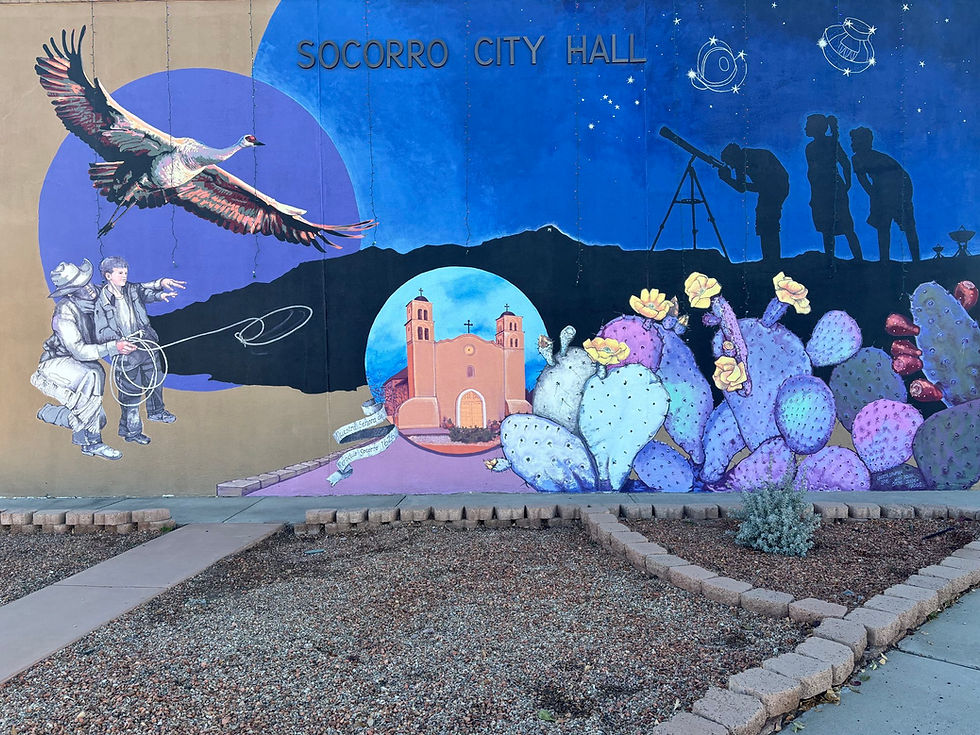Slow food Sunday
- kaydee777
- Sep 4, 2023
- 3 min read

Sunday's early morning desert food foraging yielded samples of prickly pear tuna gleaned from neighbours who don’t want their cactus fruit abundance. Not all the prickly pear fruit is equally delicious. I was cautious today, taking only a sample of the abundance to taste test.
I found that the cactus pads at the two sites are different shapes and the fruit is a different size.

The bigger bowl is from what looks like the round pad variety of Opuntia engelmannii which tends to produce fruit that is deliciously sweet.

The smaller bowl is from what looks like Opuntia engelmannii var. linguiformis aka Cow tongue cactus, because the pads are elongated and look like a very prickly cow tongue. The tuna here were smaller.
In my experience so far foraging in the northern Chihuahuan desert, the cow tongue cactus varieties have not always been so tasty. However I might have sampled them either unripe or over ripe in the past and could even have picked fruit from a different opuntia variety completely. I'm a beginner in the world of cactus identification.

This season I’m fine tuning my foraging skills, researching signs of peak ripeness even as I'm not even sure about the true identities of these prickly pear tuna factories

Both the growths of cactus are on sidewalks and are showing signs of heat and drought stress.
I discover that, though there's a difference in flavour, with the cow tongue being a little more tart, both are tasty. After processing the skinned pulp through a sieve, I save the seeds to grind into what research tells me is a highly nutritious flour. Again there's a difference in seed size between the two sites.

I shall certainly return to glean more tuna but the day has gotten hot and my stomach tells me that I need to make Sunday lunch.

I have a small patch of volunteer Chenopodium (Goosefoot) which has been providing greens throughout this long hot summer when chard and collards and any other conventional garden vegetables gave up on me.

Portulaca oleracea commonly called Purslane is another reliable, edible green volunteer which has established itself in a variety of places around the garden, mostly not in designated garden beds. Some juicy sprigs, flowers and all, come in to be chopped with the chenopodium.

I most often eat purslane raw but have a plan today for savory chickpea flour pancakes filled with garlic and shallots on hand still from the earlier harvest and these nutritious greens which many regard as weeds and thus remove from gardens with great ardor.

The pancake is topped with (homemade) green tomato chutney, for the taste and digestion enhancing spices, and a mix of kitchen counter sprouts, served with fresh avocado from some faraway place a million miles away.

My foraged and home grown heavy Sunday lunch is washed down with honey sweetened prickly pear iced tea. Juice from the cow tongue cactus tuna was added to a base brew of rooibos tea, ginger and anise. The colour is heavenly.

While I enjoyed this fine meal I thought about foraging, slow food and how much the desert earth on which I live had contributed, in spite a dire and stressful season, and how much we miss when we fail to see the nutritious food options offered so freely all around us.
Of course that is only possible if we hold back on the toxic weed killers which many of my neighbours use, and which prevent the feisty and individualistic ancestors of agribusiness products from volunteering.
Yes I have had to offer up a measure of control over what grows where, since the portulaca and chenopodium wander where they will in the garden, unbent to my rules about walkways and garden beds.
Then too there's the highly acculturated way we think about what is food.
I was at the Saturday farmers market when I asked neighbour #1 about her prickly pear abundance. Her face twisted into a grimace of of distaste when speaking of the cactus fruit, almost as though I was discussing eating something unmentionable like animal anus parts (sidebar note: Anthony Bourdain did - both eat and discuss the nasty bits). The crowd of fresh, local food shoppers flowed around us: a young woman carrying arms full of beautiful butternut, another shiny watermelons. Neighbour #2 alongside, overhearing my prickly pear discussion, offered her patch to me, with the same grimace of distaste. I am grateful to get two sites to glean having already gobbled up all the prickly pear my own newly established (possibly) Opuntia engelmannii roommates produced this year.
Of course the reluctance of many to eat these desert jewels leaves all the more for me and the various desert creatures who depend on prickly pear for moisture and nutrients. I don't mind being classed amongst the animals, insects and immigrants from hot dusty countries for my culinary choices. Just call me desert tortoise and leave me under a cactus.




Comments